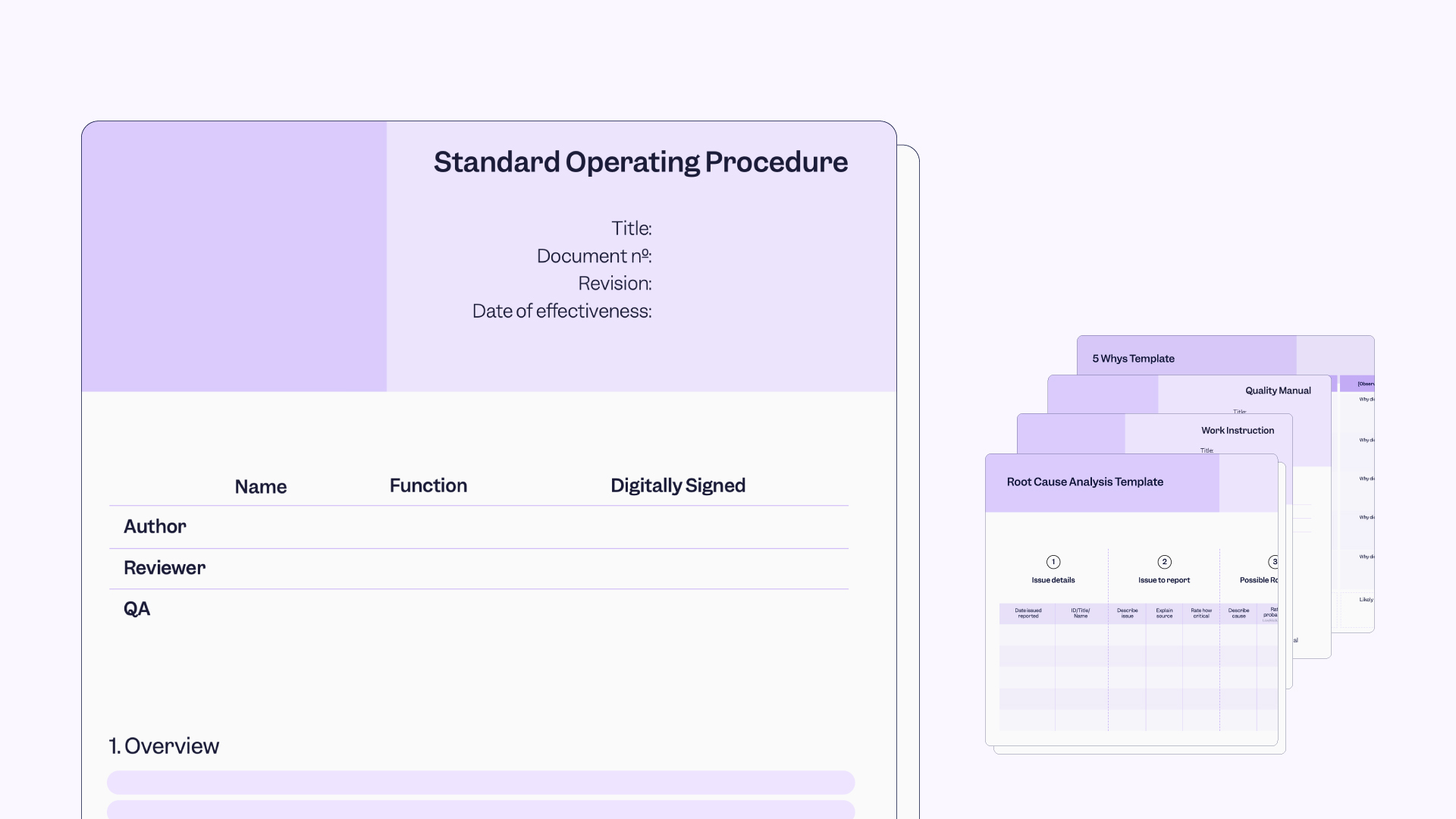In the highly regulated Life Sciences industry, your complaint management system is an integral part of a successful Quality Management System (QMS). Industry leaders with a profound understanding of Quality and a far-sighted approach toward customer support are aware that a complaint management system is much more than just a tool for regulatory compliance. Such companies rely on their complaint management system to identify potential areas of improvement for fine-tuning the Quality of their products and services. If you are passionate about customer support in the Life Sciences industry, you would also agree that a complaint management system is your chance to provide patient-centric products and services in its truest sense. So, if you are excited about surpassing your own Quality and support standards, get ready to explore the meaning of a complaint, different types of complaints, how to handle a complaint, and why you need a unified complaint management system in the Life Sciences!
Meaning of Complaint
A complaint is often confused with feedback. But there are some key differences between feedback and a complaint, and they are as follows:
- A complaint differs from feedback in the sense that feedback is often voluntarily sought by the manufacturer/service provider, whereas a complaint is self-initiated by the end user. In the case of medical devices, the end-user is a patient or a healthcare provider.
- Feedback can be positive or negative, whereas a complaint is always negative. In other words, a complaint can be taken as feedback, but every feedback is not essentially a complaint.
- Whenever feedback is received, the manufacturer/service provider may not have any obligation to act on the problem; but in case of a complaint, the manufacturer/service provider is legislatively bound to act immediately depending on the risk involved. For example, a complaint manufacturer may be required to recall products with potential for the same defect as reported in the complaint.
Therefore, 21 CFR Part 820.3 defines a complaint as:
"any written, electronic, or oral communication that alleges deficiencies related to the identity, Quality, durability, reliability, safety, effectiveness, or performance of a device after it is released for distribution."
Similarly, ISO 13485:2016 defines a complaint as:
"any written, electronic, or oral communication that alleges deficiencies related to the identity, Quality, durability, reliability, usability, safety, or performance of a medical device that has been released from the organization’s control or related to a service that affects the performance of such medical devices."
Now that the concept of a complaint is clear, let’s focus on the different types of complaints you will come across in a Life Sciences company.
Types of Complaints
Depending on the types of products/services your company sells, the type of complaint may also vary.
For example, in the pharmaceutical industry, there are three types of complaints:
Quality Complaints
Originating at the consumer level and concerned with physical, chemical, and biological properties or condition of labeling and/or product packaging.
Adverse Reaction Complaints
Due to allergic reactions of any other untoward reaction or fatal reaction or near-fatal reaction.
Other Medically Related Complaints
For example, lack of efficacy or clinical response.
In a medical device company the types of complaints are as follows:
Incident-driven Complaints
An incident such as serious harm or death caused due to malfunction of the device will require immediate attention.
Review-driven Complaints
When reviewing your data, if a pattern of repeated failures or flaws which qualifies as a complaint are noticed, it can be categorized as a review-driven complaint.
The above five types are the most commonly known complaints in Life Sciences; however, in the future we may even see customer complaints that go well beyond the types mentioned above. Irrespective of the type, you will need a standardized procedure for handling complaints. Therefore, let’s move on to understand the essential steps involved in dealing with the complaints in your QMS.
How to Deal with Complaints in Your QMS
Every complaint is an opportunity to improve your product or service. Therefore, to maximize the improvement potential you need to rationally evaluate the complaint:
Record the Complaint
As soon as a complaint is received, document the complaint carefully in your QMS. If you use a software solution such as Scilife’s Deviations and Nonconformities Management Software, then keeping track of incoming complaints will be a breeze. The complaint record should include important details such as when the complaint was first observed, who reported the complaint, and who recorded the complaint in your QMS. The easiest way to not miss any important aspects of the complaint is to follow the 5W1H rule that we have discussed before.
Perform a Root Cause Analysis
There are several methods for root cause analysis, including the Ishikawa diagram, Failure Mode Effect Analysis, and 5 Whys. You can choose any of these methods as long as they meet your requirements. While performing the root cause analysis, it is important to include all stakeholders who are responsible for Quality, safety, and efficacy.
Plan Corrective and Preventive Actions (CAPAs)
Once you have identified the root cause, you should proceed to jot down your CAPAs. You can use Scilife’s CAPA Management Software to make your life easier here. Your CAPAs plan may include experimentation to test hypotheses derived from your root cause analysis or it may include some additional due diligence that will prevent the reoccurrence of the complaint. It is important to capture all the important details; so stick to the 5W1H rule as in the case of recording the complaint.
Close CAPAs with the Appropriate Conclusion
After your CAPAs are ready, it is your turn to show your commitment toward the end user by doing what you promised in the CAPAs. Therefore, ensure that all necessary CAPAs are closed as you had planned. After successful completion of all activities, make sure to note the outcome in the form of a conclusion to communicate how the CAPAs have eliminated the possibility of the recurrence of the defect that led to the complaint.
What Integrating a Unified Complaint Management System in Your QMS Can Do for You
A unified complaint management system is defined as a complaint management system that is well-integrated into your QMS and is uniformly implemented across the depth and breadth of your organization. Now that you know the importance of a complaint management system and how to handle complaints, let’s dive right into how a unified complaint management system can help improve your organization!
1. Boost Your Efficiency
When you have a disconnected QMS for recording the complaint and managing the CAPAs, cross-referencing relevant data and documents is undoubtedly challenging. This can cause delayed responses to complaints or concerns from both customers and staff. The resulting lag can cause serious safety issues, non-compliance, customer frustration, and ultimately revenue losses. A unified complaint management system empowers you to address them quickly, and efficiently.
2. Prevent Mistakes from Happening Again
Failing to resolve Quality issues can lead to recalls and a loss of trust. If this happens repeatedly, it can take years to fix your reputation. Therefore, you need a unified complaint management system to avoid repeated failure events. You will not need to create multiple work instructions for using different processes across different functions and locations of your organization. As a result, you will have tested and vetted a complaint system that ensures the efficient processing of the complaint. An efficient process in turn ensures effective corrective steps to prevent it from happening again.
3. Improve Your Documentation
A unified complaint management system standardizes the documentation practice across all functions and locations of your organization. Having a concrete documentation process is critical in regulated sectors like the Life Sciences. A unified complaint system does so much more than maintaining a record of received complaints! Good documentation helps reduce or avoid future failures and saves your organization from Quality issues, recalls, and eventual loss of trust.
A unified complaint management system uncovers the hidden issues in your day-to-day operations by creating a thorough documentation paper trail. If these hidden factories go unnoticed, it may take years to fix the Quality issues, and harm the company’s reputation irreversibly. Companies can use this paper trail to link supplier Quality and corrective actions. They can also periodically use the documentation to reassess any risks. It is imperative to implement a unified complaint management system as without proper documentation, recalls, continued product issues, and overall customer dissatisfaction can occur.
4. Build Your Customer Loyalty
Customers like to know that companies hear them and validate their complaints. They are the backbone of your company’s success, and it can take years to build up loyalty. With a unified complaint management system, you can build long-lasting customer relationships by standardizing your complaint management process. You can calm your customers by being transparent about how you handle their complaints. Over time, your customers will become aware of the exact process steps you will take to resolve their complaints. If a customer submits a complaint to your unified system, they will be assured that you will work through their problem effectively and efficiently. Plus, people usually tell other people if they are not satisfied with a company. Having a unified system in place can help you save multiple customer relationships with one interaction.
5. Identify Gaps in Your Services or Products
When customers are more comfortable reporting complaints, you have more opportunities to improve and perform better than your competitors. You may think that everything is running just fine, but your customer may see gaps that are unknown to you. They will serve you the harsh truth about your products or services and report whether they are satisfied – or not. You can take these complaints and turn them into opportunities. Improve on the areas they complain about to give better products and services. This will help you stay ahead of your competitors too!
Conclusion
A unified complaint management system simplifies the complaint-handling process by standardizing the workflow. Your employees know exactly what they need to do when an adverse reaction is reported or when a device is malfunctioning. As a result, they provide a polite and empathetic response to your customers while proactively orchestrating all necessary stakeholders to address the issues. A unified complaint management system not only assures regulatory compliance but also creates perpetual customer trust, therefore propelling your company towards market leadership in your domain.
Discover how Scilife Quality Events Management Software can help you deal with Complaints!

